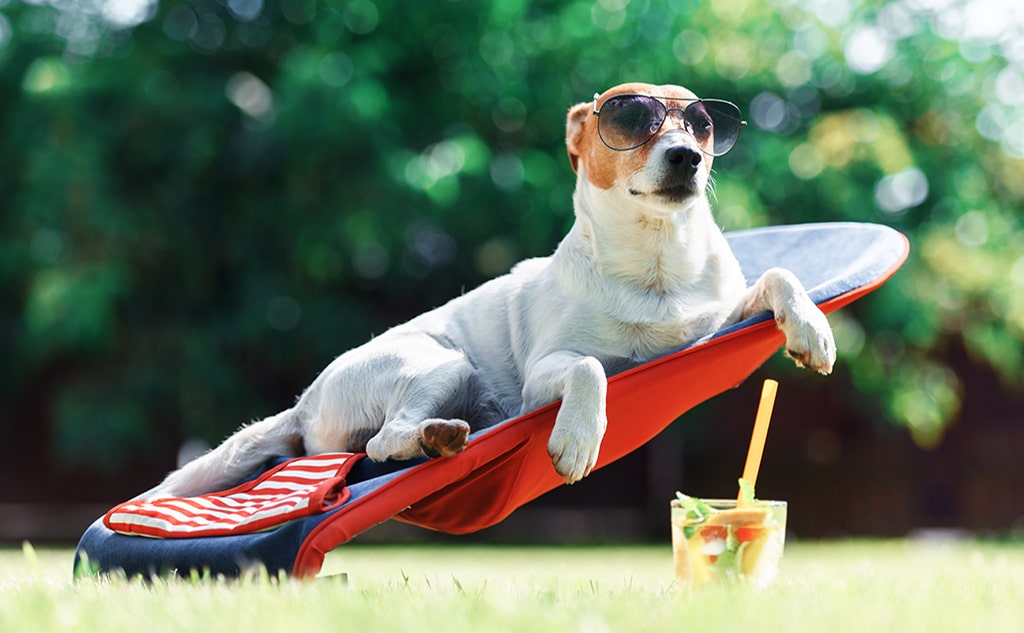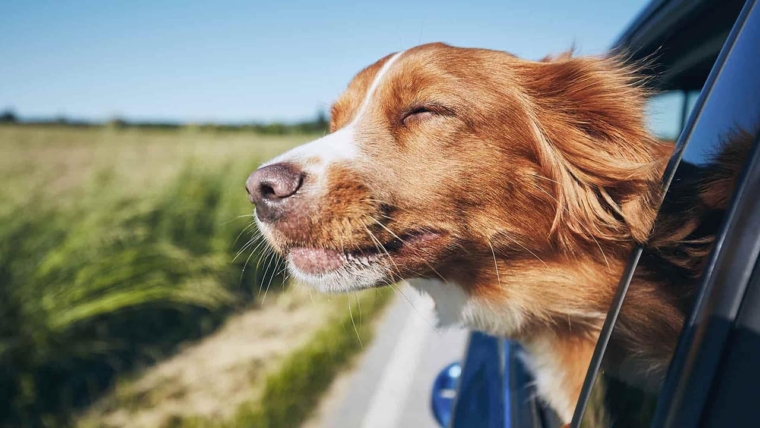
The summer months are here, and that means it’s time for your dog to get some exercise. But if you don’t do this in the early morning or evening, you may find yourself walking your pup past a park with lots of shade at noon. In this situation, it’s easy for your pet to overheat—and if they get heatstroke, there’s nothing more dangerous than taking them outside while they’re suffering from this condition!
What is heat stroke in dogs?
Heatstroke is a severe condition that can be fatal if not treated quickly. The symptoms include vomiting, panting and lethargy followed by collapse. The dog’s body temperature rises to 106 degrees Fahrenheit (40 degrees Celsius), and it may have a seizure if left untreated for too long.
How to protect your dog from heat stroke
Never leave your pets in a parked car
It is a myth that your car’s interior will cool down, especially if you leave it for more than 10 minutes. The temperature inside a parked car can rise to over 100 degrees in just 10 minutes! Even if you’re only gone for five minutes, that’s still too long to let your pet sit in a parked vehicle.
In addition to being extremely dangerous for both dogs and cats (who often don’t like being left alone), going with pets in cars is also illegal: California Vehicle Code Section 3106 states that “a person shall not leave an animal unattended on or about a motor vehicle while they are driving upon any highway unless it is securely enclosed so as not to be readily accessible.”
Don’t walk your dog during the hottest part of the day.
The hottest part of the day is between 11 am and 3 pm. It’s essential to keep your dog indoors, so they don’t get into trouble. They will feel more comfortable if you take them for a walk at other times during this period, but be sure to leave them in the shade or out of direct sunlight if possible.
Dogs are susceptible to heatstroke and dehydration because their fur is an insulator against heat loss, while our bodies do not have this protection. If you notice any symptoms like excessive panting or drooling, contact your vet immediately!
Provide ample shade and water
Providing ample shade and water is a great way to protect your dog from the heat. A shady area can help reduce the amount of energy your dog expends during the day, allowing them to cool down and rest more effectively at night.
Be sure there’s enough fresh, clean water for them to drink, ensuring it doesn’t get too warm! If you’re worried about how much is enough (or not), check with a vet before giving any advice on how many times per day/week or month you should give them access to fresh drinking water. You might want something like “small amounts.”
Carry water and a collapsible bowl with you on walks.
If you don’t have access to a water source, carry a collapsible bowl with you on walks. The easiest way to do this is by using an attachable collapsible bowl that fits in the palm of your hand and can be carried in a pocket or bag. You can also look into smaller collapsible bowls that are easier to maintain than full-sized ones. If there’s no way for your dog to drink from a regular water fountain or faucet, consider bringing along an extra portable water dispenser (like these), so they have access when needed!
Choose shady routes to walk them in.
Shade is one of the most important things you can provide your dog. It helps keep them cool and hydrated, not to mention having an exciting time playing in the shade. This can be accomplished by choosing a shady route for walks or setting up a tent on their back deck or driveway. If you have space in your yard, consider building some enclosures for pets prone to overheating during hot weather (like spaniels).
Watch for signs of heatstroke
If your dog is suffering from heatstroke, look for these signs:
- Panting
- Nausea and vomiting
- Inability to balance on hind legs or stand up (this could be due to being dizzy)
Call the vet immediately if you notice any of these symptoms in your pup! The first thing they’ll do is take a rectal temperature and check their heart rate. They’ll need immediate medical attention if it’s above 102 degrees Fahrenheit (38 degrees Celsius). The vet will also want to know if there was any exercise during this period so they can treat any underlying issues that might be causing this reaction.
How to treat a pet suffering from heatstroke
If your dog suffers from heatstroke, the first step is to call the vet. Your veterinarian will be able to give you advice on how to treat and prevent further exposure. To cool down a pet with heatstroke, use cool water doused directly on its skin or soaked into towels. This method should be repeated until the animal no longer shows signs of distress (such as rapid panting).
If your pet has been unconscious for more than 15 minutes after suffering from dehydration caused by losing fluids through vomiting or diarrhea, call your vet immediately! They will likely advise blood tests to check for other issues like heart disease or kidney problems that could cause dehydration even if they aren’t apparent at first glance–and in these cases calling an emergency vet may save lives!
Conclusion
The first step is prevention, so ensure your pet always drinks enough water and stays cool when it feels hot outside. You can also help them stay hydrated by keeping a bowl of ice water at their feet and soaking their paws regularly during summer. If you notice any heatstroke signs, get them into the shade immediately! If no immediate access is available, seek medical attention as soon as possible. We hope this article has helped help you understand how to protect your dog from heatstroke.


